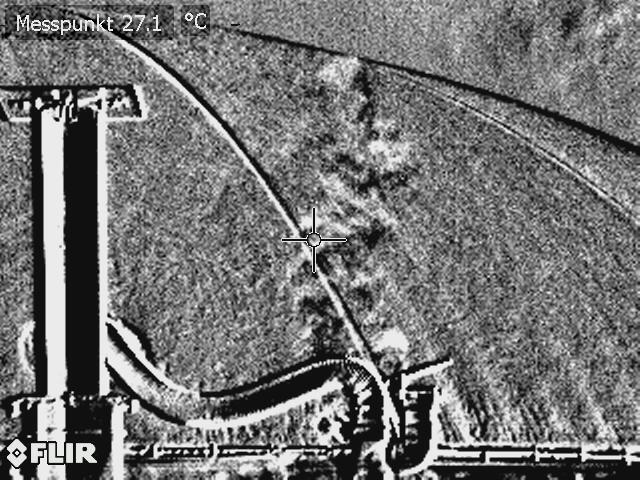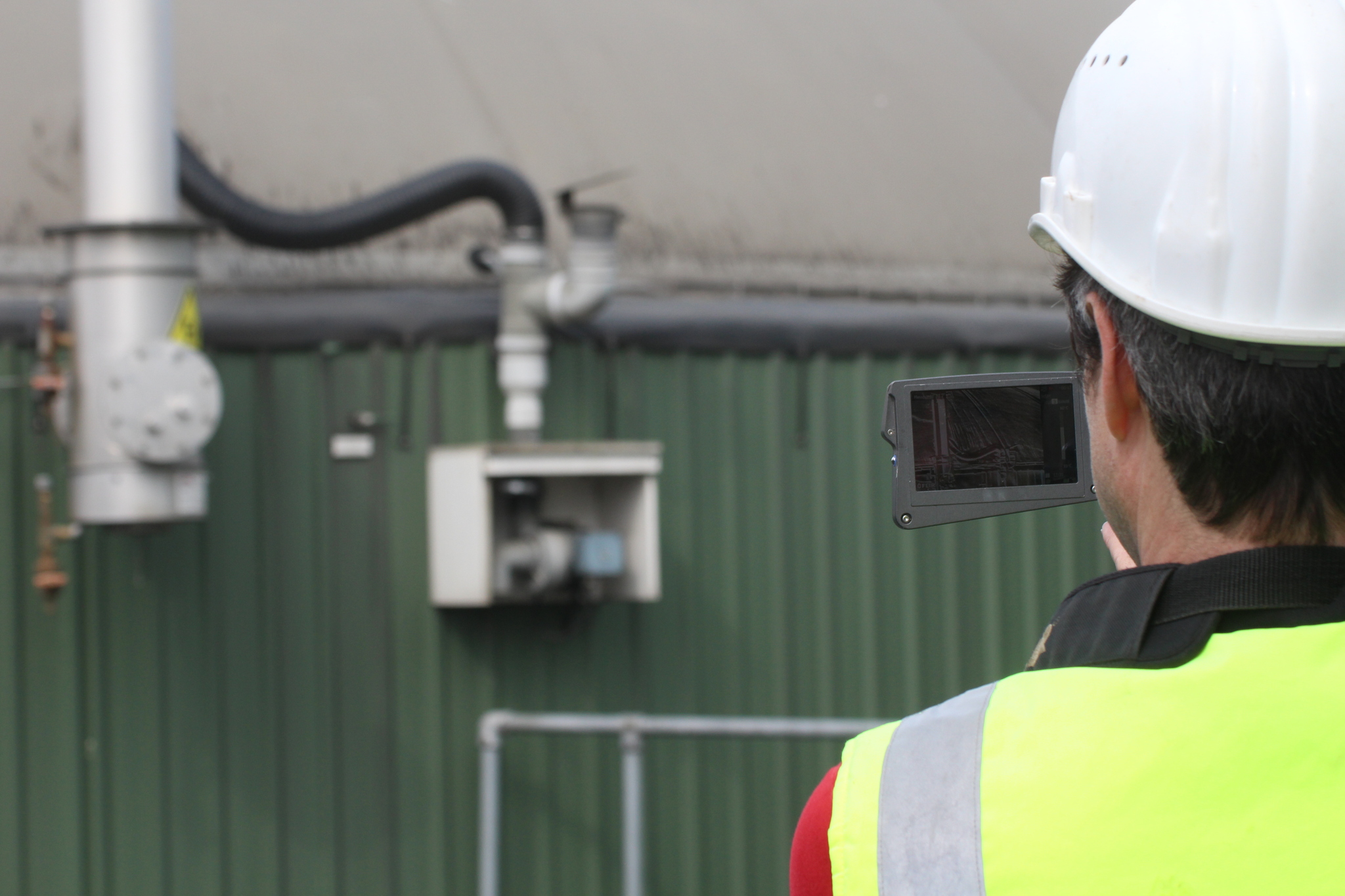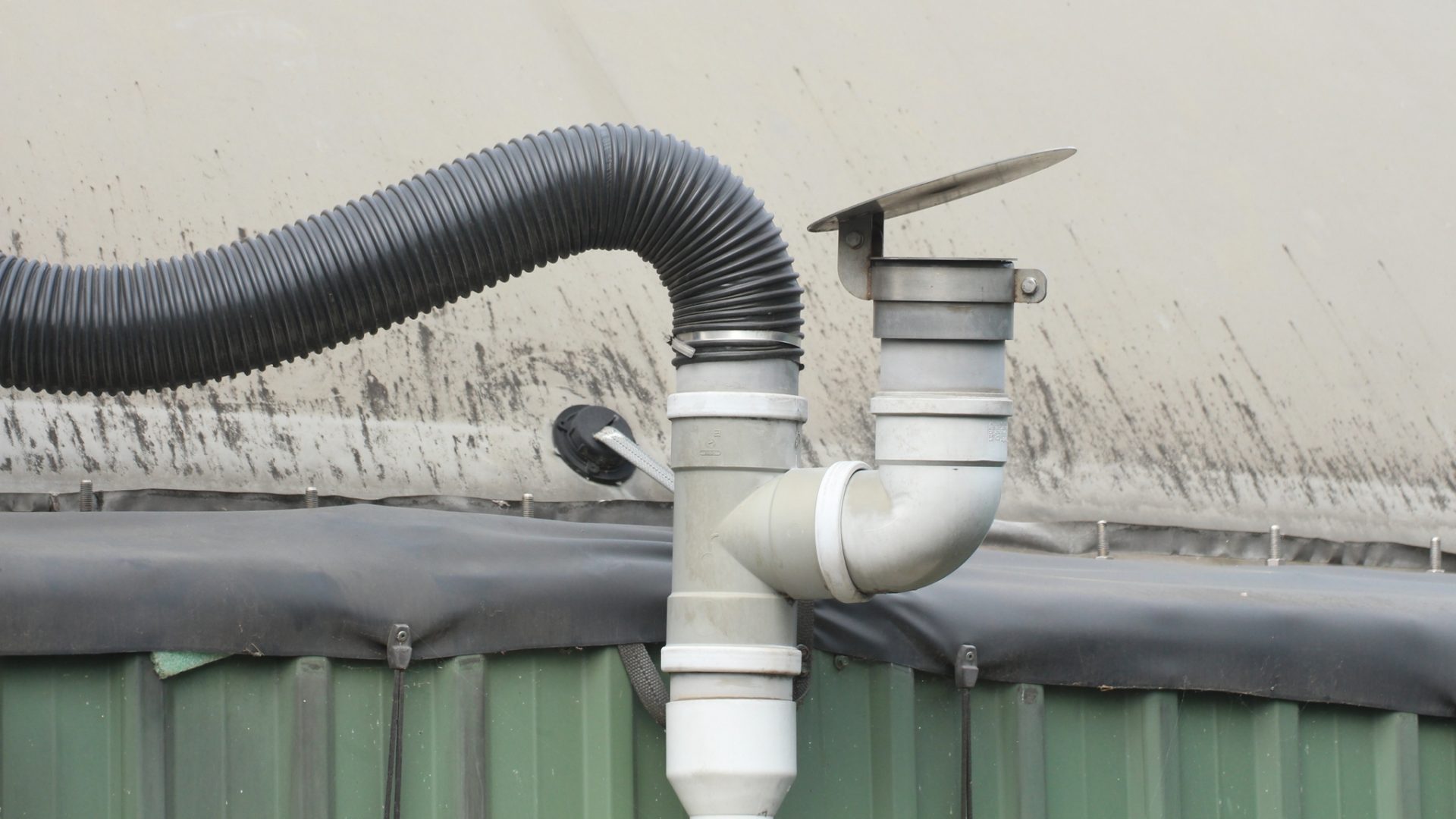
Anaerobic digestion (AD) plants are designed to convert biological feedstocks, including sewage, into biomethane-rich biogas and digestate. The aim is to convert the biomethane into usable energy either as heat, electrical power or as a replacement for fossil-derived gas fuels, including for use as a transport fuel.
However, what happens if the biomethane escapes from the digester through leakage? Not only does it reduce the efficiency of the AD plant (and with today’s high energy prices this can soon add up to significant lost income for water companies), but it can also pose a threat to health and safety, as well as being a significant greenhouse gas (GHG) pollutant.
Methane leakage – a significant problem

According to the Intergovernmental Panel on Climate Change (IPCC), methane (CH4) emissions have been responsible for a significant proportion of the 1.1°C rise already experienced in global temperatures. Although leakage from biogas plants represents just a small proportion of global methane emissions, for those plants affected the impacts can be significant. Furthermore, the solutions to prevent such leaks are readily available and quickly pay for themselves.
Over eight years up to 2020, FM BioEnergy surveyed 964 AD plants in the UK and Germany and found that 85% were suffering from biogas leakage. More recently, in December 2021 we surveyed nine UK plants representing different feedstocks, technologies and locations with capacities between 500 kWe and 3 MWe, including three gas-to-grid plants with the largest site exporting 1,000m3/hr.
All nine of the most recent sites we surveyed had one or more leaks. These comprised a total of:
- 20 ‘minor’ leaks (< 100l CH4/h);
- 25 ‘moderate’ leaks (< 1,000l CH4/h);
- and one ‘significant’ leak (>1,000l CH4/h), which was causing the operator serious financial losses and represented a real safety risk.
The risks of doing nothing
Extrapolating this data shows that the issue of biogas leakage is not going away. More than 70 plants in the UK are likely to be in danger of significant financial or safety breaches, and almost all sewage AD plants will have some leaks.
If 85% of plants in the UK were to leak an average of just 0.5% of their capacity, it could equate to a potential loss of 37 GWhe a year, resulting in:
- 6,000 tonnes of methane escaping into the atmosphere annually;
- a financial loss of more than £7 million;
- and the global warming effect of more than 215,000 tonnes of CO2.
Put simply, it could be argued that generating biogas and then losing it to the atmosphere is worse than allowing the natural decomposition of organic materials and is simply unsustainable.
Aside from the considerable financial and environmental impacts, biogas leaks bring other risks. In the worst-case scenario, biogas in combination with air can form an explosive gas mixture which, in a confined space near an ignition source, can result in explosion. While explosions are thankfully extremely rare, they bring a high risk of serious injuries and fatalities and, as a result, are something no plant owner ever wants to experience on their site.
Biogas also contains hydrogen sulphide (H2S), a toxic gas which has been the cause of a number of deaths in the UK agricultural industry in relation to slurry tank management. As H2S is heavier than air, it will fall to the ground. In confined, poorly ventilated spaces it can accumulate and remain unnoticed until someone enters, resulting in sometimes fatal effects.
Reducing methane emissions to fight global warming
The current high energy price (forward gas prices have exceeded £2/therm since December) means that every cubic metre of lost biogas is costing water companies money. The sooner leaks can be fixed, the sooner you can recover that lost revenue.
Furthermore, at least year’s COP26 climate talks in Glasgow, methane took on a greater significance in the global race to reduce the harmful effects of climate change. The event saw more than 100 countries sign up to the Global Methane Pledge which aims to cut global methane emissions by at least 30% of 2020 levels by 2030. This could curtail up to 0.3°C of near-term warming, which scientists say could have a significant impact on the severity and frequency of severe weather events.
Because of its higher global warming potential (GWP), which is 28-36 times that of carbon dioxide, methane is considered to account for around half of the climate warming currently being experienced, and the reduction of methane emissions is seen as ‘low-hanging fruit’ in the fight against climate change. “Cutting back on methane emissions is one of the most effective things we can do to reduce near-term global warming and keep to 1.5°C,” European Commission President Ursula von der Leyen commented.
Compliance with new EA regulations
Closer to home, from August 2022 the Environment Agency (EA) is due to announce new regulations on the operation of AD plants, including facilities at WWTW. These are widely expected to include the need to demonstrate via an Environmental Management System (EMS) the effectiveness of covers, containment methods and abatement systems. As part of this, sites will need to have leak detection and repair plans in place.
The EA is looking to introduce formal methods to monitor and record methane leaks from AD plants and on-site containment systems. Therefore, such leaks will need to be prevented and continuously monitored so that infrastructure can be repaired when necessary. Some environmental permits already include a requirement for a regular Leak Detection and Repair (LDAR) programme and this is likely to become more widespread as existing permits are reviewed.
Leakage hotspots
Although there can be a number of causes for biogas leakage, over the years our engineers have found that some common areas are more prone to leakage than others. These frequently include:
- Cable grommets (where a submersible stirrer cable passes through the digester wall), in particular where they are not greased or maintained properly.
- Valves and covers operating at the wrong pressure, resulting in over- or under-pressure, which prevents seals and surfaces sealing properly.
- Burst plates on digester roofs and concrete roof joints.
- Gas membrane connections.
- Flange and pipework connections.
- Carbon filters.
- Any areas where maintenance is carried out.
How to protect your plant
Most minor issues can be fixed relatively easily by on-site personnel, while moderate issues may require spare parts or external specialists – for example, sealing specialists. In the worst cases it may be necessary to temporarily close plants until affected areas can be ventilated and issues repaired. It is also important to realise that, if left alone, minor issues can often become major ones, with more severe consequences and higher repair costs.

Plant operators and WWTW managers should ensure regular Leak Detection and Repair (LDAR) programmes (including leak detection surveys) are carried out. Such inspections should be carried out every twelve months unless a risk assessment suggests a different timetable. The FM BioEnergy leak detection service covers a full AD plant survey with a methane-sensitive monitor and laser, as well as infra-red devices, including:
- Survey of all tanks, CHP, biogas upgrading equipment, roof membranes, pipes and flanges.
- Analysis of emissions from CHP and double membrane covers.
- Report with images, videos and repair priority table.
As well as regular scheduled checks, leak detection surveys should also be carried out when plants begin full-scale operation; after significant maintenance work has been carried out; if your feed-to-gas conversion is lower than expected (but the biology remains stable); and of course, if you can smell biogas. The cost of detecting a potential leak and making the necessary repairs is minimal, but the implications of leaving it to chance could be major.



